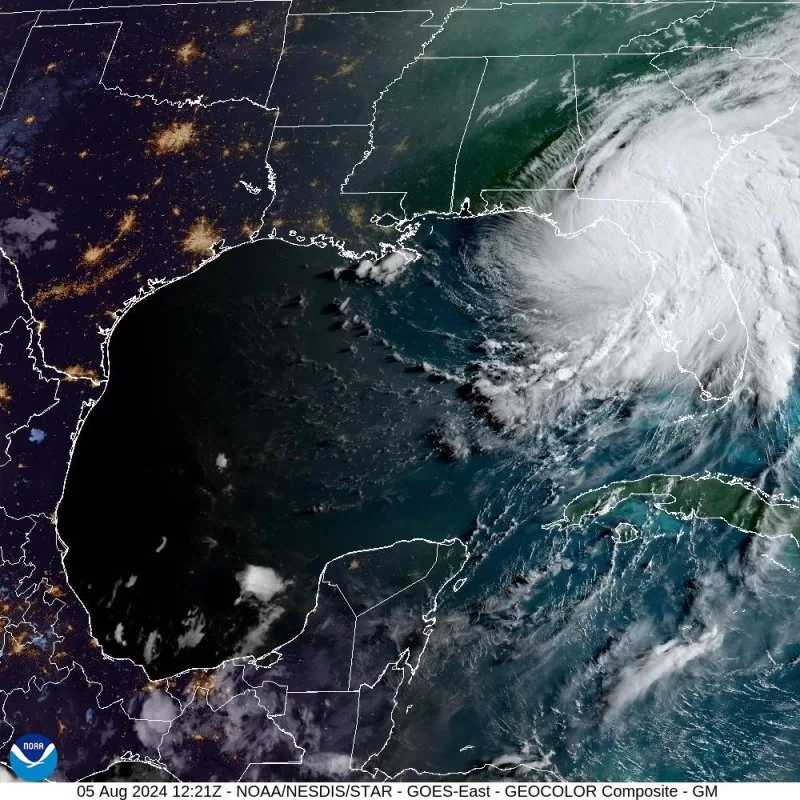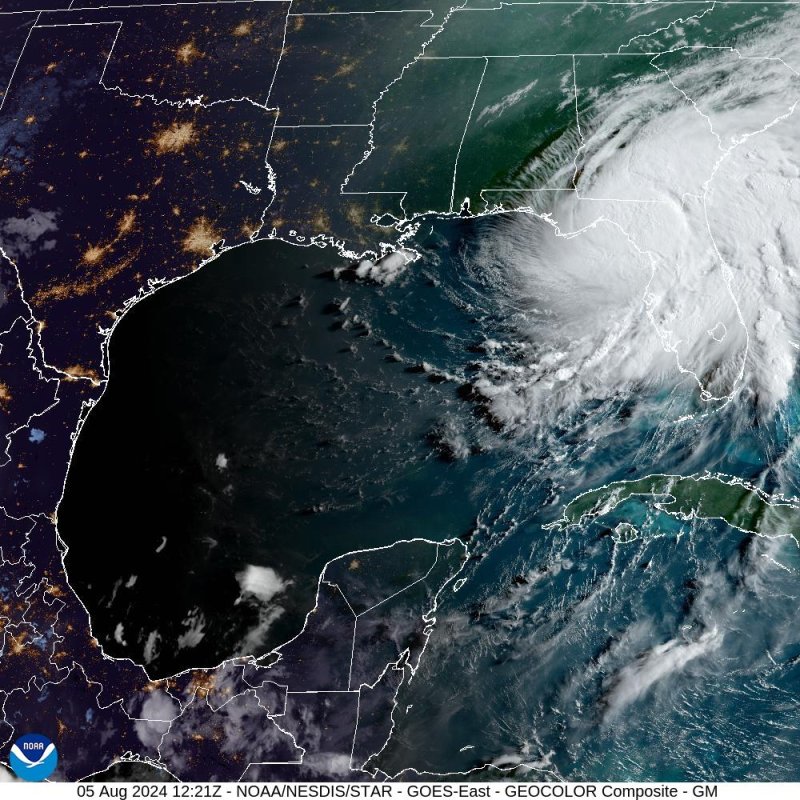Hurricane Debby was moving inland Monday morning after making landfall in Florida’s Big Bend region as a Category 1 storm. Photo courtesy NOAA
Aug. 4 (UPI) — Hurricane Debby was moving inland Monday morning after making landfall in Florida’s Big Bend region.
The storm was located about 60 miles north-northwest of Cedar Key, Fla., as of 4 a.m., the National Hurricane Center said in an update.
The forecasters said it was packing maximum sustained winds of 75 mph, a Category 1 storm on the Saffir-Simpson Hurricane Wind Scale, and was moving north-northeast at 10 mph.
The storm is forecast “to bring life-threatening storm surge in portions of Florida and major flooding in the southeastern United States,” the NHC said in an earlier Monday update.
Though having strengthened overnight, the storm is expected to weaken as it moves inland Monday morning over the southeastern United States, it said.
Forecasters are predicting “potentially historic heavy rainfall” across southeastern Georgia and South Carolina through Friday that will likely cause “catastrophic flooding.”
A hurricane warning has been issued for the Florida coast from Yankeetown to Indian Pass.
A tropical storm warning is in effect from the Florida coast south of Yankeetown to Boca Grands, the Florida coast west of Indian Pass to Mexico Beach and Ponte Vedre Beach to South Santee River, S.C.
And a storm surge warning is in effect from the Florida coast from the middle of Longboat Key north to Indian pass, including Tampa, as well as the Georgia and South Carolina coast from the Mouth of the St. Mary’s River to South Santee River, S.C.
Florida Gov. Ron DeSantis declared a state of emergency on Thursday night in 61 of 67 counties.
After landfall, weakening steering currents should cause the cyclone to slow down while it moves northeastward or eastward over parts of northern Florida and southern Georgia.
The storm is expected to produce rainfall totals of 6 to 12 inches, with maximum rainfall totals up to 18 inches across portions of Florida and across the U.S. coast through Thursday, according to NHC.
Previous storms were Tropical Storm Alberto, Hurricane Beryl and Tropical Storm Chris.

